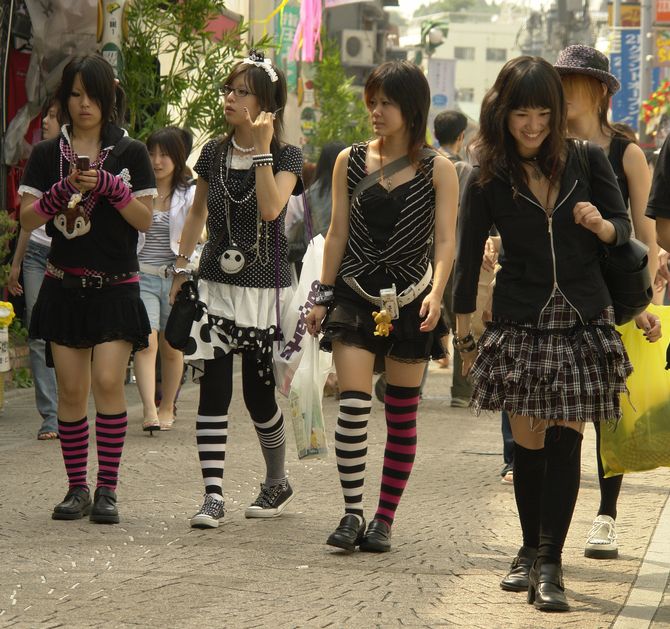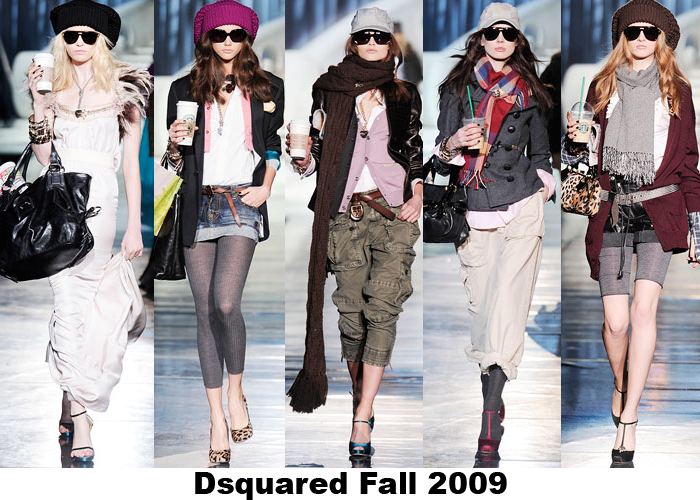

The realm of fashion varies tremendously throughout the decades but no matter what changes may take place, "fashion has always remained connected to and is never independent of its social, cultural and economic surroundings." Furthermore, the youth culture tend to dominate, "challenge, and redefine the existing notion of what is fashionable and aesthetic." The developing country of Japan and its teens as the trend setters of street fashion in South-East Asia is a perfect example of cultural rebels and soul searching. In other words, the fashion and popular trends of clothing in Asian countries such of Japan, China, Hong Kong, Korea, and many more originates from the street, which is central to the tactics marketing corporations mimics. The fashion industry and many other marketing companies constantly observe and copy the styles of teens and sells it back to the media to make bank. To these Japanese teenagers being normal would be considered out of place and as teenagers we all want to fit in and gain acceptance by the group. I totally agreed that being unique and having your own individual sense of style and fashion is creative to expressing self-identity while repelling cultural traditions, but sometimes it can get out of hand. While these young girls and boys are competing to dress fashionable, they are also conforming to consumerism significantly. Similar to the South Korean pop-culture, "image is everything," and so these "Japanese girls are always shopping, and they spend a great deal of their capital on clothes and makeup because fashion is of the utmost importance for them to stand out and be noticed." Essentually, the street fashion and hip look finds its way on the project runway. However, these street trends do not last long as new trend are rapidly occurring on the streets. Street fashion not only serves as trend-setters but also serve to segregates social and class status. For instance, the rise of Ganguro eventually led to the branching of other street subculture such as amazoness, yamamba, mamba, celemba, and lomamba, each with a mix of hip trend and brandname clothing. This relates back to the idea of mimicking because "authenticity appears to be important, and only the insiders can tell the difference between what is real and what is not." Street style "have become a core reference tool for fashion houses and designers." Therefore, street fashion is successful in that people that comes from the street are able to take the trend and recycle the look while adding their own touch/spice to it. In this way, this individual are able to fit in without appearing as the copy cat but rather as someone with a taste of fashion.
For the compact challenge, I have not been shopping much. In fact, I have not even step foot to the shopping mall for new clothes. But truth be told, I have been looking into makeup and accesories online. I know, this is still consumerism but a girl needs to be lady-like once in a while, so don't judge me. I have my limitations and I know for a fact that I'm not as girly as some people I know, who I will not mention here. haha. Besides, it's kind of hard to pass on a good deal when you see it because opportunity doesn't knock twice, know what I mean?! :)
Anywayz, I don't this compact challenge to be challenging at all whatsoever because this is basically what I push through on a daily basis. I am not a shop-a-holic because I have priorities over more important things such as school, rent, and foods.
By THUY DUONG ;)
Notice: the title doesn't necessarily mean that I come from the ghetto, just thought it'd be a catchy title ;)
Work Cited:
Kawamura, Yuniya. Japanese Teens as Producers of Street Fashion. Fashion Institue of TEchnology, New York. 2006. print.
http://www.thecoolhunter.net/fashion
(images)
1) http://xorsyst.com/wp-content/uploads/2008/08/japanese-female-fashion-harajuku-1.jpg
2) http://media.photobucket.com/image/celebrity%20street%20style/cai-lyn/blogcoffee.png
No comments:
Post a Comment